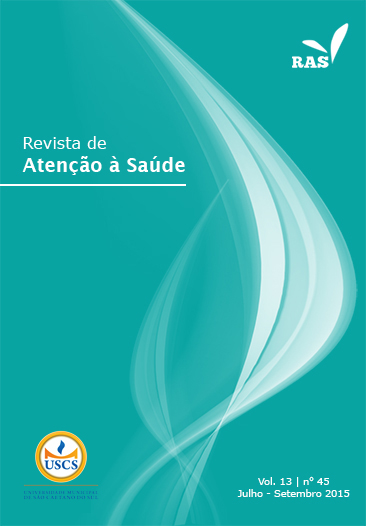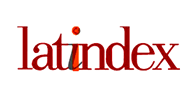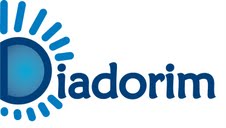THE MULTIPLE FACETS OF OVERWEIGHT IN CHILD: A SYSTEMATIC REVIEW
DOI:
https://doi.org/10.13037/ras.vol13n45.2667Keywords:
Obesity, feeding behavior, hyperphagia, childhood, schools.Abstract
Introduction: Obesity is a challenging topic in scientific literature; justified by the exponential increasein prevalence in all layers of society. Objective: Identify and review how the published literature discussthe factors that influence the weight gain in children, then suggest possible interventions. Materials andMethods: It was made a systematic review of the most cited publications about the determiners of theoverweight in children, using the databases MEDLINE/Pubmed and SciELO-BR. About the criteria, itwas chosen some articles of free access published on the last 5 years, with researches on both sexes from 0 to12 years old. To reaffirm the quality of the information collected, it was made a checklist/guide to organizeand classify the authors’ ideas. Results: This review consists of 44 articles selected, which were categorizedin three topics: child obesity and healthcare; child obesity and family habits; child obesity and schoolenvironment. Conclusion: The study allowed us to point out the overweight in children’s populations inBrazil and in some developed countries within the period of 5 years. Overweight in children is a real andconstant challenge, therefore, it is noticeable that the educational institution, the healthcare and the familyare essential to the diagnosis, treatment and prevention of child obesity, since it is a complex chronicledisease that requires a mutual effort of the different social spheres aiming to face, by intervention, thisgrave public health problem.Downloads
References
1. Azevedo FR, Brito B. Influência das variáveis nutricionais e da
obesidade sobre a saúde e o metabolismo. Rev Assoc Med Bras.
abr 2012;58(6);714-723. Disponível em http://www.scielo.br/
pdf/ramb/v58n6/v58n6a18.pdf [Acesso em 3 jan 2014].
2. Ferreira VA, Magalhães R. Obesidade no Brasil: tendências atuais. Revista portuguesa de saúde pública. Jul/dez
2006;24(2);71-82. Disponível em http://www.ensp.unl.
pt/dispositivos-de-apoio/cdi/cdi/sector-de-publicacoes/
revista/2000-2008/pdfs/2-06-2006.pdf [Acesso em 10 jul.
2013].
3. World Health Organization. Forum and Technical Meeting
on Population-based Prevention Strategies for Childhood
Obesity. Geneva: WHO; 2009.
4. Pesquisa de Orçamentos Familiares – 2008-2009: antropometria e estado nutricional de crianças, adolescentes e
adultos no Brasil. Rio de Janeiro. Instituto Brasileiro de
Geografia e Estatística (IBGE). 2010. Disponível em http://
www.ibge.gov.br/home/. [Acesso em 15 set 2015].
5. Oliveira CL, Fisberg M. Obesidade na infância e adolescência: uma verdadeira epidemia. Arq Bras Endocrinol
Metab. 2003;47(2). Disponível em http://www.scielo.br/
pdf/abem/v47n2/a01v47n2.pdf. [Acesso em 3 ago. 2013].
6. Andrade, DEG. Prevalência de sobrepeso e obesidade em
crianças de escolas públicas e privadas do ensino fundamental da cidade de Franca-SP e alguns fatores de risco associados. [dissertação de mestrado em Saúde na Comunidade]
Ribeirão Preto: Faculdade de Medicina de Ribeirão
Preto, Universidade de São Paulo, 2006. Disponível em
http://www.teses.usp.br/teses/disponiveis/17/17139/tde18092006-162308/pt-br.php. [Acesso em 6 ago. 2013].
7. IOTF, International Obesity Taskforce. A prevalência de
obesidade em todo o mundo. Londres. Disponível em
http://www.worldobesity.org. [Acesso em 31 ago. 2013].
8. Ministério da Saúde. Secretaria de Atenção à Saúde.
Departamento de Atenção Básica. Cadernos de Atenção
Básica: Obesidade. Brasília (DF). 2006. Disponível em
http://www.prosaude.org/publicacoes/diversos/cad_AB_
obesidade.pdf . [Acesso em 10 ago. 2013].
9. Custos de Doenças Ligadas à Obesidade para o SUS.
Higienópolis: Abeso. 2012. Disponível em http://www.abeso.org.br/lenoticia/909/custos+de+doencas+ligadas+a+obesidade+para+o+sus.shtml . [Acesso em 5 jan 2014].
10. Bardin L. Análise de Conteúdo. Lisboa. Edições 70;2000.
11. Lissner L. et al. Television habits in relation to overweight, diet and taste preferences in European children: the
IDEFICS study. Eur J Epidemiol. Set 2012;27(9):705-
15. Disponível em: http://www.ncbi.nlm.nih.gov/pubmed/22911022. [Acesso em 15 set 2015].
12. Moraes PM, Dias CMDSB. Nem só de pão se vive: a voz das
mães na obesidade infantil. Psicol. cienc. Prof. 2013;33(1):46-
59. Disponível em: http://www.scielo.br/scielo.php?script=sci_arttext&pid=S1414-98932013000100005&lang=pt.
[Acesso em 15 set 2015].
13. Santos LRDC, Rabinovich EP. Situações familiares na obesidade exógena infantil do filho único. Saude soc. 2011;20(2):507-
21. Disponível em: http://www.scielo.br/scielo.php?script=sci_arttext&pid=S0104-12902011000200021&lang=pt.
[Acesso em 15 set 2015].
14. Simon VGN, et al. Prevalência de sobrepeso e obesidade
em crianças de dois a seis anos matriculadas em escolas
particulares no município de São Paulo. Revista Brasileira
de Crescimento e Desenvolvimento Humano. 2009;19(2).
Disponível em: http://pepsic.bvsalud.org/scielo.php?script=sci_arttext&pid=S0104-12822009000200002. . [Acesso
em 15 set 2015].
15. Murdoch M, et al. Family-based behavioural management
of childhood obesity: Service evaluation of a group programme run in a community setting in the United Kingdom.
European Journal of Clinical Nutrition, 2011;65:764-7.
16. Novaes JF. Fatores ambientais associados ao sobrepeso
infantil. Rev. Nutr., Campinas, set/out 2009;22(5):661-
73. Disponível em http://www.scielo.br/pdf/rn/v22n5/
v22n5a07.pdf . [Acesso em 3 jan. 2014].
17. Lindsay AC et al. Child feeding practices and household
food insecurity among low-income mothers in Buenos
Aires, Argentina. Ciênc. saúde coletiva.2012;17(3):661-9.
Disponível em: http://www.scielo.br/scielo.php?script=sci_arttext&pid=S1413-81232012000300012&lang=pt.
[Acesso em 15 set 2015].
18. Tenorio AES, Cobayashi F. Obesidade infantil na percepção
dos pais. Rev. paul. pediatr. 2011;29(4):634-9. Disponível
em: http://www.scielo.br/scielo.php?script=sci_arttext&pid=S010305822011000400025&lang=pt. [Acesso em 15
set 2015].
19. Carvalho MA, Carmob I, Bredac J, Rito AI. Análise comparativa de métodos de abordagem da obesidade Infantil.
Rev Port Saúde Pública. 2011;29(2):148-56. Disponível
em http://www.scielo.gpeari.mctes.pt/pdf/rpsp/v29n2/
v29n2a08.pdf . [Acesso em 4 jan 2015].
20. Damasceno MMC et al. Correlação entre índice de massa
corporal e circunferência da cintura em crianças. Acta Paul
Enferm. 2010;23(5);652-67. Disponível em http://www.
scielo.br/pdf/ape/v23n5/11.pdf . [Acesso em 4 jan 2015].
21. Kesztyüs D et al. Is central obesity associated with poorer health and health-related quality of life in primary school children? Cross-sectional results from the Baden-Württemberg
Study. BMC Public Health. 2013;13:260. Disponível em:
http://www.ncbi.nlm.nih.gov/pmc/articles/PMC3652747.
[Acesso em 15 set 2015].
22. Rodrigues LG, Pombo N, Koifman S. Prevalência de alterações metabólicas em crianças e adolescentes com sobrepeso e obesidade: uma revisão sistemática. Rev Paul Pediatr.
2011 [acesso em 16 set 2015];29(2):277-88. Disponível
em http://www.scielo.br/pdf/rpp/v29n2/a21v29n2.pdf.
[Acesso em 4 jan 2014].
23. Persaud N et al. Association between serum cholesterol and
eating behaviours during early childhood: a cross-sectional study. CAMJ. 2013;185(11):536-42. Disponível em:
http://www.ncbi.nlm.nih.gov/pmc/articles/PMC3735770.
[Acesso em 15 set 2015].
24. Mendonça MRT et al. prevalência de sobrepeso e obesidade em
crianças e adolescentes da cidade de Maceió. Rev Assoc Med
Bras. 2010;56(2):192-6. Disponível em: http://www.scielo.br/
pdf/ramb/v56n2/a18v56n2.pdf . [Acesso em 3 jan 2014].
25. Venâncio P, Aguilar S, Pinto G. Obesidade infantil: um problema cada vez mais actual Obesity in children in Portugal: a cross-sectional study. Rev Port Med Geral Fam. 2012;28(6);410-6.
Disponível em: http://www.scielo.gpeari.mctes.pt/scielo.php?script=sci_arttext&pid=S2182-51732012000600005&lang=-
pt. [Acesso em 15 set 2015].
26. Rech, RR et al. Prevalência de obesidade em escolares de
7 a 12 anos de uma cidade serrana do RS, Brasil. Rev Bras
Cineantropom Desempenho Hum. 2010;12(2): 90-7.
Disponível em :http://www.scielo.br/pdf/rbcdh/v12n2/
a02v12n2.pdf . [Acesso em 3 jan 2014].
27. Smith DSC et al. Does the local food environment around
schools affect diet? Longitudinal associations in adolescents
attending secondary schools in East London. BMC Public
Health. 2013;13(70). Disponível em: http://www.ncbi.nlm.
nih.gov/pmc/articles/PMC3567930. [Acesso em 15 set 2015].
28. Lisa M et al. The Association Between Sleep Duration and
Weight in Treatment-Seeking Preschoolers with Obesity.
Sleep Med. 2012;13(8):1102-5. Disponível em: http://
www.ncbi.nlm.nih.gov/pmc/articles/PMC3433160.
[Acesso em 15 set 2015].
29. Rossi CE et al. Influência da televisão no consumo alimentar e na obesidade em crianças e adolescentes: uma
revisão sistemática. Rev. Nutr. Campinas. 2010;23(4): 607-
20. Disponível em http://www.scielo.br/pdf/rn/v23n4/
v23n4a11.pdf . [Acesso em 3 jan 2014].
30. Moreira MA et al. Overweight and associated factors
in children from northeasten Brazil. J Pediatr Rio J.
2012;88(4):347-52. Disponível em http://www.scielo.br/
pdf/jped/v88n4/a12v88n4.pdf. [Acesso em 3 jan 2014].
31. Alexandra C et al. An analysis of potential barriers and enablers to regulating the television marketing of unhealthy
foods to children at the state government level in Australia.
BMC Public Health. 2012;13(1123). Disponível em
http://www.ncbi.nlm.nih.gov/pmc/articles/PMC3572413.
[Acesso em 15 set 2015].
32. Bernardo CO et al. Factors associated with nutritional status
of 7-10 year-old schoolchildren: sociodemographic variables,
dietary and parental nutritional status. Rev Bras Epidemiol.
2012;15(3):651-61. Disponível em http://www.scielosp.org/
pdf/csp/v29n2/03.pdf. [Acesso em 3 jan 2014].
33. Shi Z et al. Short sleep duration and obesity among
Australian children. BMC Public Health. 2010;10(609).
Disponível em: http://www.ncbi.nlm.nih.gov/pmc/articles/
PMC2964630. [Acesso em 15 set 2015].
34. Claudia S et al. The stigma of obesity in the general public and its implications for public health – a systematic
review. BMC Public Health. 2011;11(661). Disponível em:
http://www.ncbi.nlm.nih.gov/pmc/articles/PMC3175190.
[Acesso em 15 set 2015].
35. Lourenço BH, Cardoso MA. Práticas alimentares na infância, crescimento infantil e obesidade na vida adulta.
Arq Bras Endocrinol Metab. 2009;5: 528-39. Disponível
em: http://www.scielo.br/scielo.php?script=sci_arttext&pid=S0004-7302009000500006&lang=pt. [Acesso em
15 set 2015].
36. Quadros TMB et al. Excesso de peso em crianças: comparação entre o critério internacional e nacional de classificação do índice de massa corpórea. Rev Paul Pediatr.
2012;3(4):537-43. Disponível em: http://www.scielo.br/
pdf/rpp/v30n4/12.pdf . [Acesso em 3 jan 2014].
37. Rajalakshmi L et al. Protocol for systematic reviews of determinants/correlates of obesity-related dietary and physicalactivity behaviors in young children (preschool 0 to 6 years):
evidence mapping and syntheses. Syst Rev. 2013;2(28).
Disponível em: http://www.ncbi.nlm.nih.gov/pmc/articles/
PMC3691606. [Acesso em 15 set 2015].
38. Friedrich RR, Schuch II, Wagner MB. Efeito de intervenções sobre o índice de massa corporal em escolares. Rev Saúde
Pública. 2012;46(3):551-60. Disponível em: http://www.
scielo.br/pdf/rsp/v46n3/3678.pdf . [Acesso em 3 jan 2014]
39. Marchi-Alves LM et al. Obesidade infantil ontem e hoje:
importância da avaliação antropométrica pelo enfermeiro.
Esc Anna Nery. 2011 [acesso em 16 set 2015];15(2): 238-
44. Disponível em: http://www.scielo.br/pdf/ean/v15n2/
v15n2a04.pdf . [Acesso em 4 jan 2015].
40. Lazzeri G et al. Relationship between 8/9-yr-old school
children BMI, parents’ BMI and educational level: a cross
sectional survey. Nutr J. 2011;19(10):76-82. Disponível
em: . [Acesso em 15 set 2015].
41. Pergher RN et al. Is a diagnosis of metabolic syndrome applicable to children? O diagnóstico de síndrome metabólica
é aplicável às crianças? J Pediatr Rio J. 2010; 86(2):101-
8. Disponível em: http://www.scielo.br/pdf/jped/v86n2/
v86n2a04.pdf . [Acesso em 3 jan 2014].
42. Leal VS et al. Excesso de peso em crianças e adolescentes no Estado de Pernambuco, Brasil: prevalência e
determinantes. Cad Saúde Pública. 2012;28(6): 1175-82.
Disponível em: http://www.scielo.br/scielo.php?script=sci_arttext&pid=S0102-311X2012000600016&lang=pt.
[Acesso em 15 set 2015].
43. Momoi C et al. Saúde da criança: fatores de risco aplicados
em programas de atenção básica à saúde. Acta Paul Enferm.
2012;25(2):231-47. Disponível em: http://www.scielo.br/
pdf/ape/v25n2/a12v25n2.pdf . [Acesso em 4 jan 2014].
44. Sanches MS, Andrade RM. Percepciones y prácticas de
madres de pre-escolares brasileños acerca de la alimentación de los hijos. Enferm. glob. 2011;10(21). Disponível
em: http://scielo.isciii.es/scielo.php?script=sci_arttext&pid=S1695-61412011000100015&lang=pt. [Acesso
em 15 set 2015].
45. Marion Hare et al. Methods and baseline characteristics
of a randomized trial treating early childhood obesity: The
Positive Lifestyles for Active Youngsters (Team PLAY) trial.
Contemp Clin Trials. 2012;33(3):534-49. Disponível em:
http://www.ncbi.nlm.nih.gov/pmc/articles/PMC3336873/
pdf/nihms360469.pdf . [Acesso em 15 set 2015].
46. Naidu BM et al. Overweight among primary school-age
children in Malaysia. Asia Pac J Clin Nutr. 2013;22(3):408-
15. Disponível em: http://www.nejm.org/doi/pdf/10.1056/
NEJMp1310577. [Acesso em 4 jan 2014].
Downloads
Published
Issue
Section
License
Copyright (c) 2015 Maria Juliete Maia Gomes, ELLANY GURGEL COSME DO NASCIMENTO

This work is licensed under a Creative Commons Attribution-NonCommercial-NoDerivatives 4.0 International License.
Policy Proposal for Journals offering Free Delayed Access
Authors who publish in this magazine agree to the following terms:
- Authors maintain the copyright and grant the journal the right to the first publication, with the work simultaneously licensed under a Creative Commons Attribution License after publication, allowing the sharing of the work with recognition of the authorship of the work and initial publication in this journal.
- Authors are authorized to assume additional contracts separately, for non-exclusive distribution of the version of the work published in this magazine (eg, publishing in institutional repository or as a book chapter), with the acknowledgment of the authorship and initial publication in this journal.
- Authors are allowed and encouraged to publish and distribute their work online (eg in institutional repositories or on their personal page) at any point before or during the editorial process, as this can generate productive changes, as well as increase impact and citation of the published work (See The Effect of Open Access).









